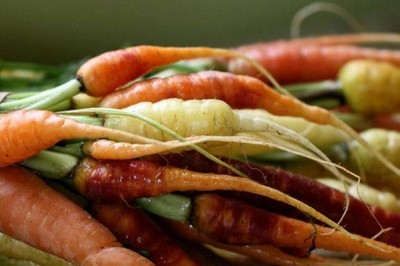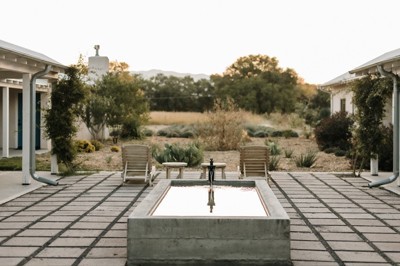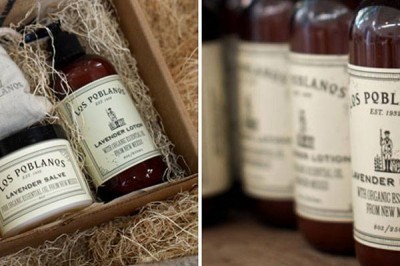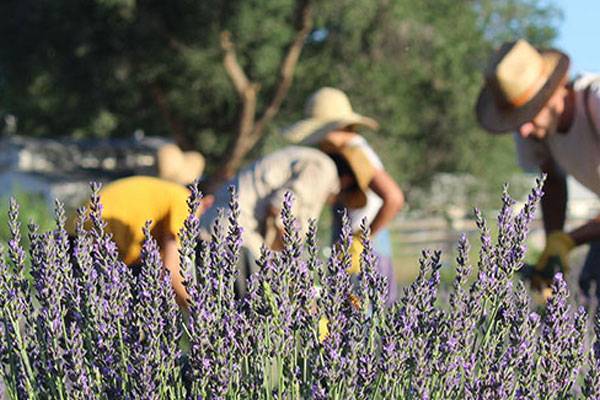Organic Farm & Gardens
As part of our goal to preserve the agricultural history of Los Poblanos, a significant percentage of the property is dedicated to regenerative organic farming. The farming model is driven by sustainability - being a good steward to the land, architecture, culture and community. Our commitment is expressed by growing ingredients organically, literally steps from the kitchen. Dedication to the agrarian past extends to preservation of our historic 1930s gardens and guests experience 25 acres of a unique and diverse landscape firsthand, creating a profound and authentic agritourism experience.
Walking farm tours are offered for guests during the warmer months, visit the Events Calendar to learn more.
Kitchen Gardens & Artisan Farming

At Los Poblanos, we have dedicated some of our agricultural fields solely to food production for our kitchens. We proudly farm organically and sustainably. Our farmers cultivate a broad array of heirloom, native, and standard varieties of crops that are highlighted in the Rio Grande Valley Cuisine crafted in the kitchen at Campo. By collaborating closely with the kitchen, we can grow the freshest, highest quality ingredients to provide our guests with an outstanding dining experience.
Some of the native varieties we grow on the farm include Epazote, Lambs Quarters, Devil’s Claw, Acoma Light Melons, Hopi Purple String Beans, Zuni Blue Corn, and Acoma and Navajo Pumpkin. These varieties provide a link to a thousand-year agricultural history in New Mexico. Not only are they locally adapted and heat- and drought-tolerant, but they are also delicious!
Our farm can provide fresh produce to the kitchen year-round by growing heat-tolerant varieties in the summer and by using season extension methods in the winter. Row-cover cloth and the unheated hoop house keep cold-tolerant vegetables safe from damaging frosts until they are ready to harvest. The Lord & Burnham Historic Greenhouse is used year-round. We plant vegetable, herb, and flower seeds in starting trays on greenhouse shelves. We take cuttings from our fields of Grosso lavender and root them and other cuttings in the greenhouse as well.
Los Poblanos Honey Bees
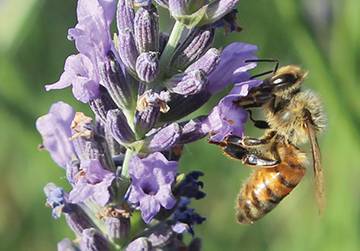
In 1976, Penny and Armin Rembe and their children moved to Los Poblanos and began maintaining the property as gentlemen farmers. They began preserving the historic gardens and sustainably farming the fields. In support of a perfect ecosystem owner Armin Rembe (Farmin’ Armin) started maintaining several Top Bar hives in 2005, three of which have been restored and are currently in use in our lavender fields.
Today, beekeeping continues on the farm through the efforts of local expert Lara Lovell. Together they keep bees in the Slovenian bee house that was constructed in the summer of 2019. They are using AZ hives, named for Anton Žnideršič who created the unique design in his native Slovenia over 100 years ago. The clever design has two chambers, a brood and a honey chamber, which allows each to be inspected without disturbing the other.
We envision a future where educational beekeeping activities and innovative experiences will be woven into the agritourism experience, further connecting guests with our agricultural model we hold so dear. Beekeeping is a truly beautiful process that we are thrilled to incorporate into our farming efforts, as we continue to sustainably preserve the historic Los Poblanos Ranch.
Rose Greely Garden
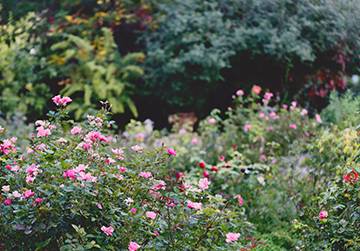
The formal Spanish-style gardens around the Hacienda and La Quinta were designed in 1932 by Rose Greely, a pioneer female landscape architect. Greeley was the first female graduate of Harvard’s landscape architecture program and worked primarily in the Washington DC area designing residential gardens. Coincidentally, her roommate at Harvard was John Gaw Meem’s future wife, Faith. This connection through the Simms’ relationship with Meem was the introduction that brought Greely to Los Poblanos, her only known work in the Southwest. The gardens feature vibrant flower beds, Spanish tile fountains, rose cutting gardens, winding pathways and mosaic stonework by “Pop” Shaffer, a folk artist who had arrived in Mountainair, NM in 1908. The entrance driveway features an allée of mature Cottonwood trees.
Judith Phillips
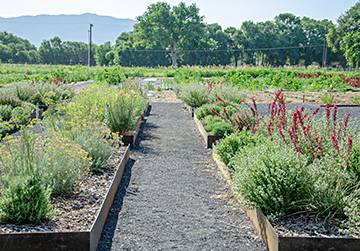
Judith designed the landscapes surrounding the Farm Suites at the time of their construction, utilizing more drought tolerant species than had been historically planted. This design also incorporated plants that were found in other gardens on the property to maintain familiar continuity while moving towards a more multi-functional and environmentally sensitive approach to landscape design. Judith worked with AOSA (Atkin Olshin Schade Architects) as a plant consultant in the development of the landscapes for the Field Suites, selecting species that were lower water use, edible and pollinator friendly as well as beautiful.


